In project management, clarifying the roles and responsibilities of each participant is the key to ensuring the smooth progress of the project. The RACI chart , as an intuitive responsibility allocation matrix, was born for this purpose. This article will introduce the definition, usage scenarios, and best practices of the RACI model in detail , and share a large number of examples and templates .
The RACI model is a model used to clarify different roles and related responsibilities in organizational change or project management. It uses four letters (R, A, C, I) to represent four different types of responsibilities:
R (Responsible): The role responsible for executing tasks, specifically responsible for controlling projects and solving problems.
A (Accountable): The role that is fully responsible for the task and has the final approval or signing authority to ensure that the task is carried out.
C (Consulted): A person who provides specific opinions before or during the implementation of a task and has the information or ability to complete the project.
I (Informed): A person who is notified of the results in a timely manner and does not need to be consulted or asked for opinions.
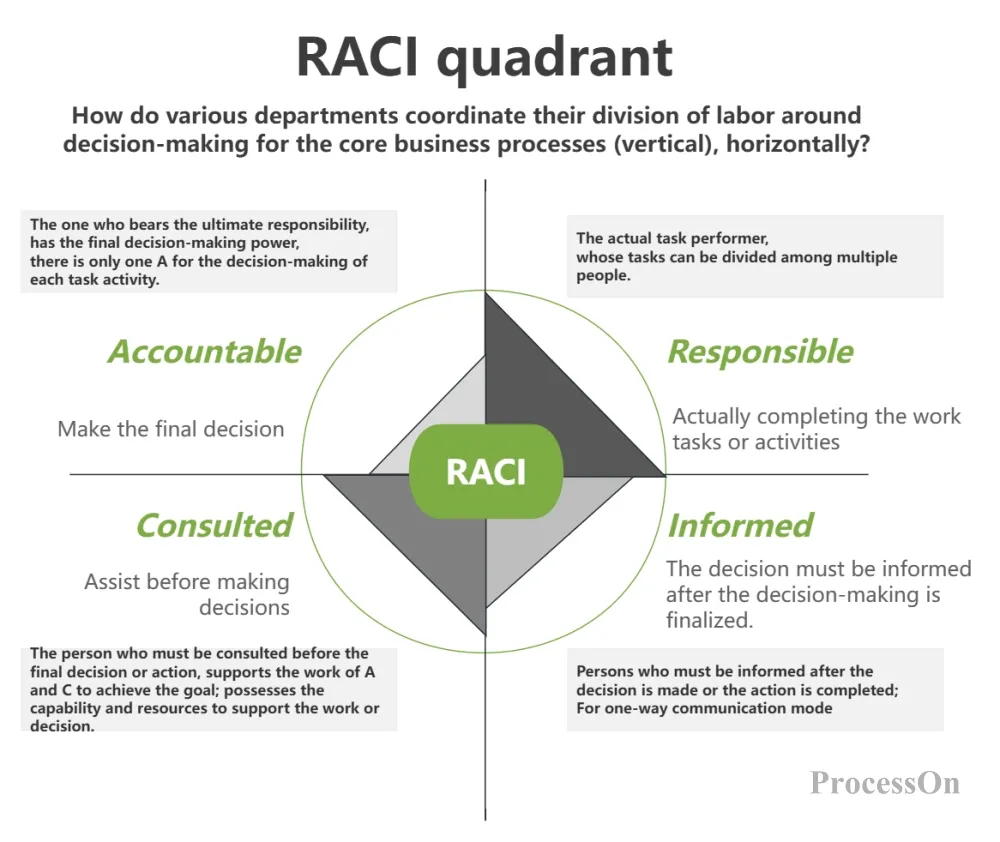
When a project kicks off: Define from the outset who is responsible, accountable, consulted, and informed, and set clear expectations and communication channels.
Complex Projects: When a project involves multiple team members and stakeholders, a RACI chart helps simplify complexity, enable smooth coordination, and reduce confusion.
During organizational change: During reorganization or personnel transfers, RACI charts maintain role clarity, provide stability, and align new team members with project goals.
During Agile Transition: RACI diagrams help clarify roles and processes during Agile transitions and are best used in conjunction with other Agile practices.
1. Clarify project goals and scope
At the beginning of the project, clarify the overall goals and expected results of the project to ensure that all project members have a common understanding of the goals. At the same time, determine the specific tasks, activities and decision points involved in the project , exclude content that is not directly related to the project goals, and keep the RACI chart simple.
2. Identify all relevant roles
Identify all the participants in the project, including team members, departments, stakeholders, etc. , to ensure that no key roles are missed . Provide a brief description of each role, clarifying their responsibilities and authorities , which will help to be more accurate and clear when assigning responsibilities.
3. Sorting out project tasks and activities
According to the project objectives, list all the tasks or activities required to achieve the objectives, and ensure that the task descriptions are specific and clear to facilitate the subsequent responsibility allocation. If possible, determine the logical relationship and execution order between tasks , which will help understand the entire project process and more accurately represent the responsibility allocation in the RACI chart.
4. Assign RACI Responsibilities
According to the duties and capabilities of each role, assign the four types of responsibilities, R, A, C, and I, to the corresponding roles. Draw a matrix with roles as rows and activities as columns. At the intersection of the matrix, fill in the letters R, A, C, and I according to the distribution of responsibilities.
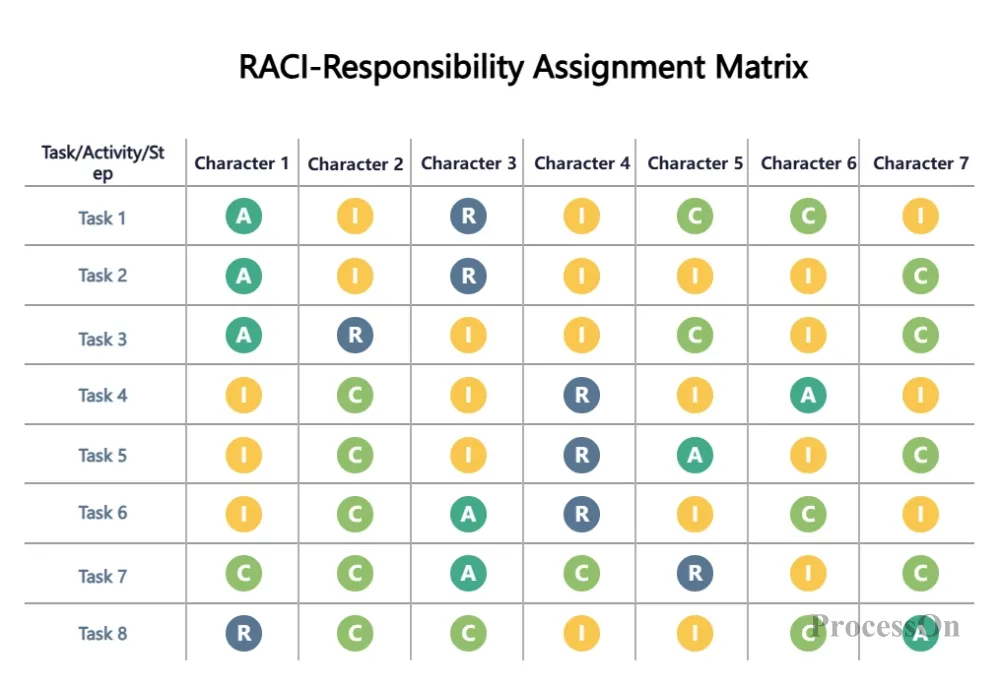
Allocation principles:
Every task or activity has at least one "responsible" role.
Each task or activity can only have one "responsible" role.
The "consultation" and "informed" roles are determined based on actual needs and there can be multiple roles.
Many tools can be used to draw RACI charts. Here we recommend ProcessOn , which is an online charting tool that contains a large number of project management related charts that can be used for reference or use.
Specific steps:
1. Open the ProcessOn official website, enter the personal file page, and click New to create a flowchart .
2. Drag the required symbols from the graphic library on the left. You can use rectangles to build the RACI chart frame , or you can click More Graphics in the lower left corner, select Table, and use the table to make a RACI chart.
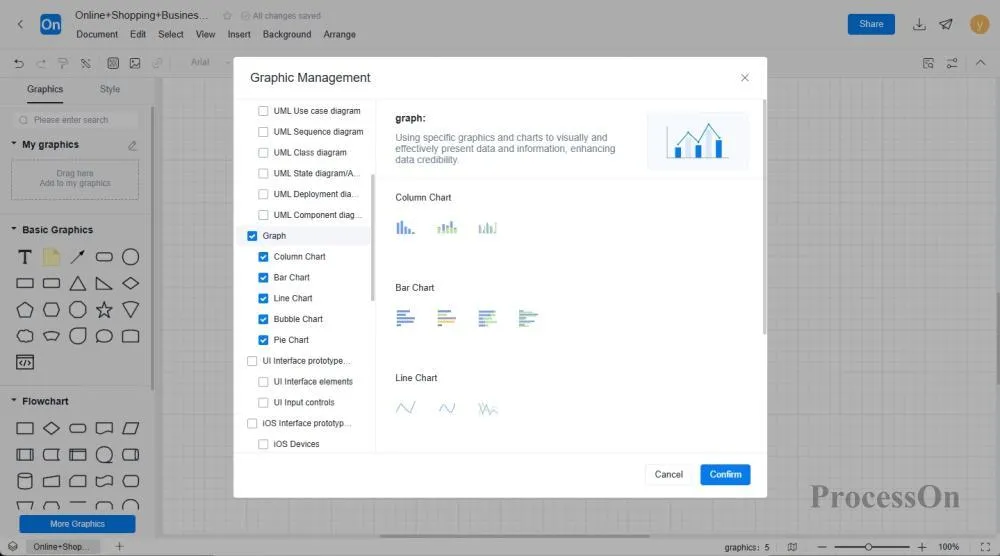
3. Select a graphic or cell, and use the top toolbar to adjust the color, font and other styles to make the user flow diagram more beautiful and easy to read.
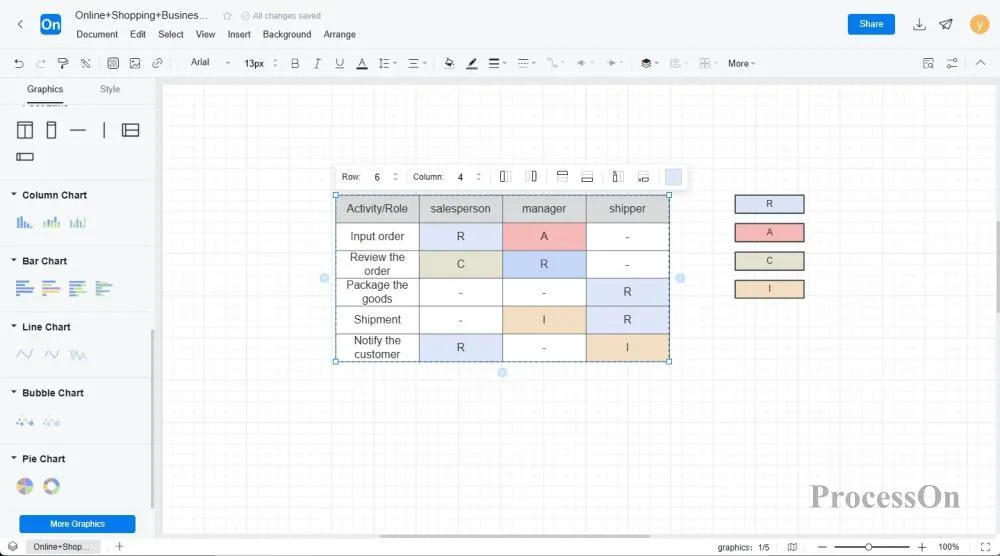
4. After the drawing is completed, it can be exported as an image or PDF format, which can be inserted into corporate documents and shared with team members. You can also directly share the flowchart with colleagues or customers for team members to view or edit online.
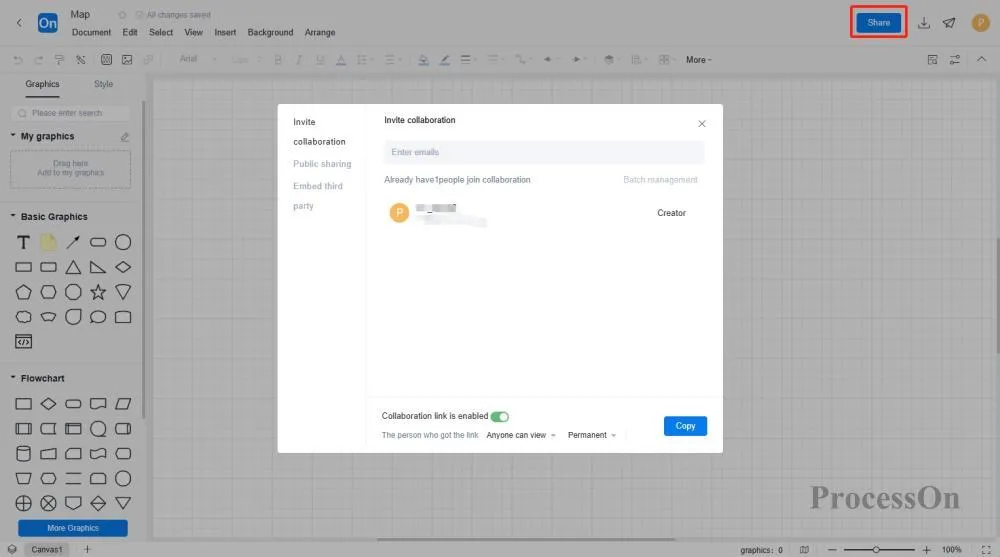
Example: Suppose we have a simple online shopping business process involving three roles: salesperson, manager, and shipper. The following is an example of a RACI diagram for this business process
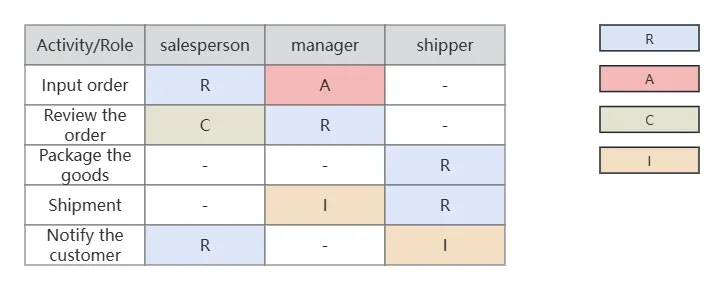
Online Shopping Business Process - RACI Diagram
In this example:
Salespeople are responsible for entering orders and notifying customers.
The manager is responsible for reviewing orders and has overall accountability for order entry activities.
The shipper is responsible for packing and shipping the goods, and needs to be notified of the shipping results in a timely manner.
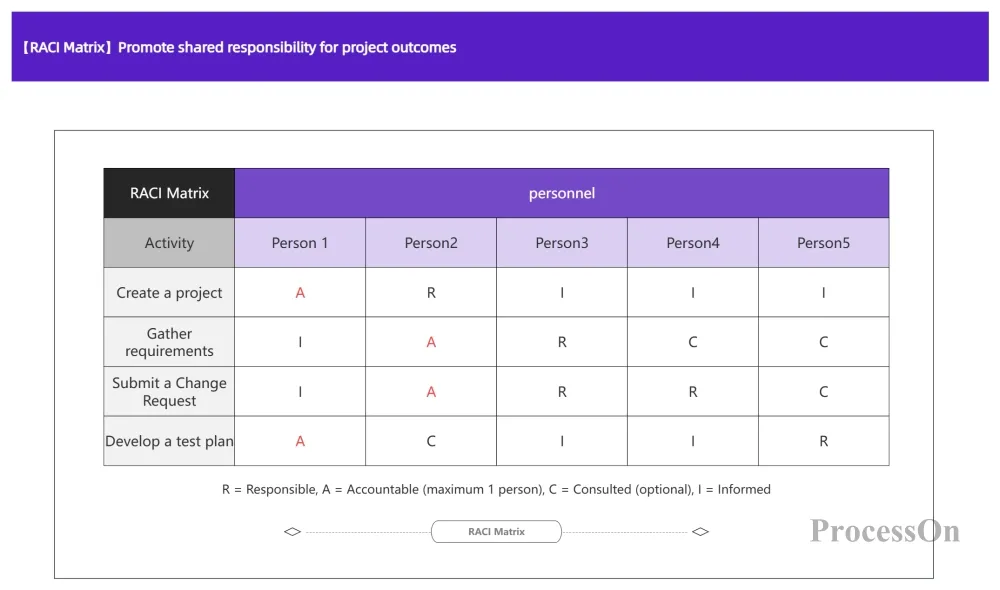
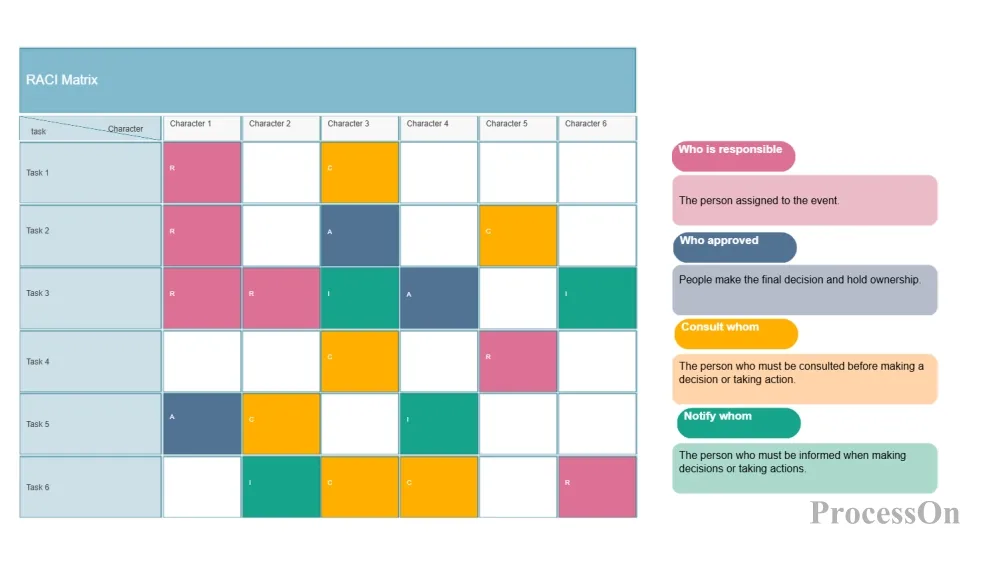
RACI Responsibility Assignment Matrix
The above examples and templates are from the ProcessOn template community . The RACI model is used in project management to present the project's responsibility allocation in the form of a matrix diagram, so that team members have a clear understanding of their respective decision-making rights and job responsibilities, reduce misunderstandings and conflicts, and when decisions need to be made, team members can quickly find the person responsible to avoid decision delays or confusion.